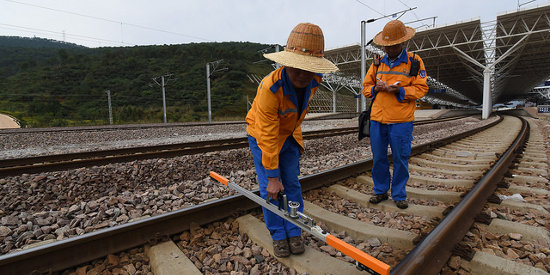On 27 June the Brookings-Tsinghua Center for Public Policy, Stockholm Environment Institute, and the Embassy of Sweden in China will hold a dialogue to promote innovation in green finance and sustainable infrastructure in China’s Belt and Road Initiative, as Sweden’s Minister for the Environment makes an official visit.

The Belt and Road Initiative aims to generate multi-trillion dollar additional trade annually by creating corridors and trade routes, complete with infrastructure such as roads, railways, ports, pipelines and power stations, linking China to Russia, Europe and East Africa via Pakistan, and Central and Western Asia.

The initiative is closely related to other Chinese actions that seek to establish a set of new financial institutions to raise funding for infrastructure. China has committed hundreds of billions of dollars to financial institutions such as the flagship Asian Infrastructure Investment Bank (AIIB), of which Sweden is a member; the Central Asia-focused Silk Road Fund; and the New Development Bank, which is led by the Brazil-Russia-India-China-South Africa (BRICS) grouping.
“These financial institutions will play a crucial role in determining whether the BRI-generated infrastructure will add massive amounts of carbon emissions to the atmosphere or if it will roll out green and low-carbon infrastructure”, said Karl Hallding, Senior Research Fellow at SEI and one of the initiators of the seminar in Beijing.
“And as a member of the powerful AIIB, Sweden has both an opportunity and responsibility to push for BRI going green”, he continued.
And China’s government has previously stated that the Belt and Road Initiative should promote green infrastructure. With leading expertise and capacity in green infrastructure technologies such as high-speed trains, solar and wind power, China potentially has a lot to offer, and to gain, from low-carbon infrastructure development in neighbouring countries.
But observers also suggest that a key rationale for the Belt and Road Initiative is to provide an outlet for over-capacity from China’s heavy industry, making the implementation of the strategy far more likely to be “brown” than “green”. In the past five years Chinese manufacturing capacity and the country’s real estate markets have been plagued by massive surplus, which might explain why the leadership is looking beyond its borders for new generators of future growth.
“If the current USD 50 billion cooperation along the China-Pakistan Economic Corridor is taken as an indication of how the BRI might be rolled out, there is considerable risk that high-carbon energy and infrastructure systems made in China could lock-in countries along the BRI routes into long-term dependency on fossil fuels”, said Guoyi Han, Senior Research Fellow at SEI and China specialist.
“Both China and Sweden have been forerunners in advancing green finance. China now issues more green bonds than any other country, while a decade ago the Swedish bank SEB, alongside the World Bank, pioneered green bonds”, said Hallding.
“That is why seminars like this one can play an important role in bringing key actors together for informal but progressive discussions about how rules for green finance could make a real difference for the future.”
Read the SEI discussion brief “China’s economic slowdown: Good news for the environment?“
Design and development by Soapbox.
